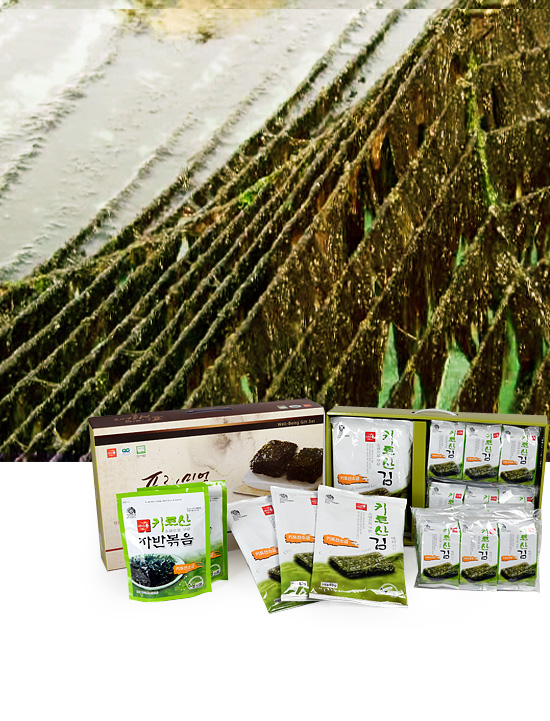Basic facts about seaweed
Seaweed, a traditional food intrinsic to Korea, is a type of red algae and food rich in nutrients.
They grow in relatively deep ocean along the shores of Korea, China and Japan. The leaves are either composed of one or two layers of thin film and their shapes differ greatly. But they all have wave shaped wrinkles and are 14cm to 25cm long and 5cm to 12cm wide. They are either red or green and propagate like moss on rocks or other substances inside the ocean.
Seaweed is a representative food of Korea recorded to have been consumed since long ago. It is recorded in ancient books such as Gyeongsangdo Geography, Sejongsillok Geography, Bangmulbo, Jasaneobo, Haedong History. In ancient times also, natural seaweed are said to have been collected from rocks on seashores and consumed as food.
A fisherman in Taein Island, Gwangyang-gun, South Jeolla Province, of the King Injo times of the Joseon Dynasty is said to seen seaweed stuck on floodwood and started to erect tree branches to cultivate seaweed. This is said to have been the start of seaweed cultivation. Alginic acid found in seaweed reduces the level of bad cholesterol in blood and strengthens the artery walls. As such, it is effective in preventing and treating high blood pressure and sclerosis of the arteries.
Rich in minerals, seaweed also plays an important role in treating anemia and in the formation of the body frame and teeth. As such, it is known as a food for longevity. Iodine in seaweed is a component of thyroid, prevents thyroid edema and helps grow beautiful hair. Quality seaweed is a health food supplementing all kinds of nutrients necessary in cold winters. But given that the excessive consumption of salt is one of the weaknesses of the Korean diet, it would be good to sprinkle little salt on seaweed when grilling it.



